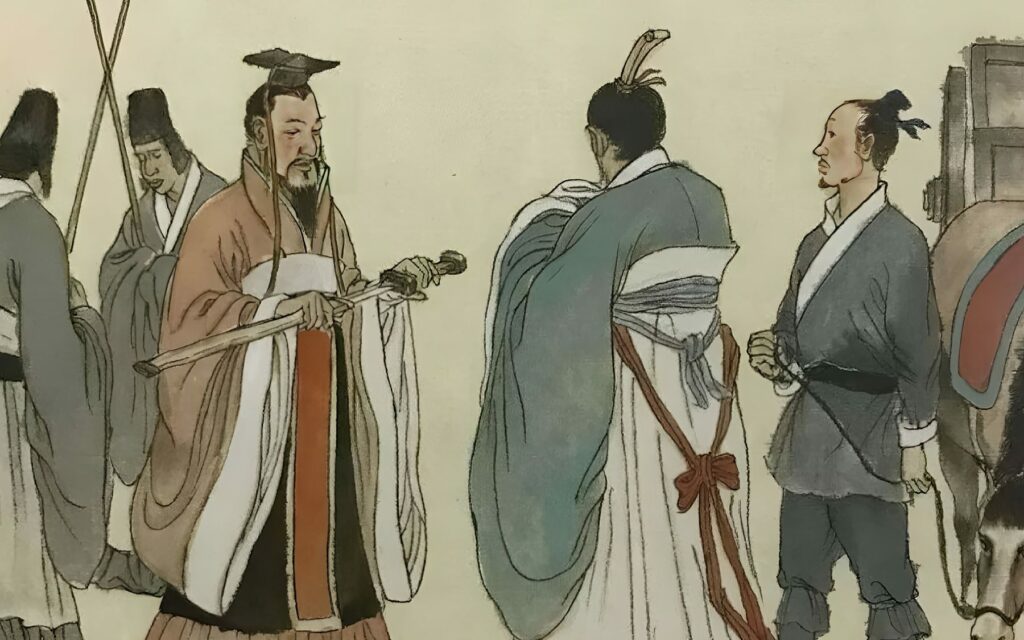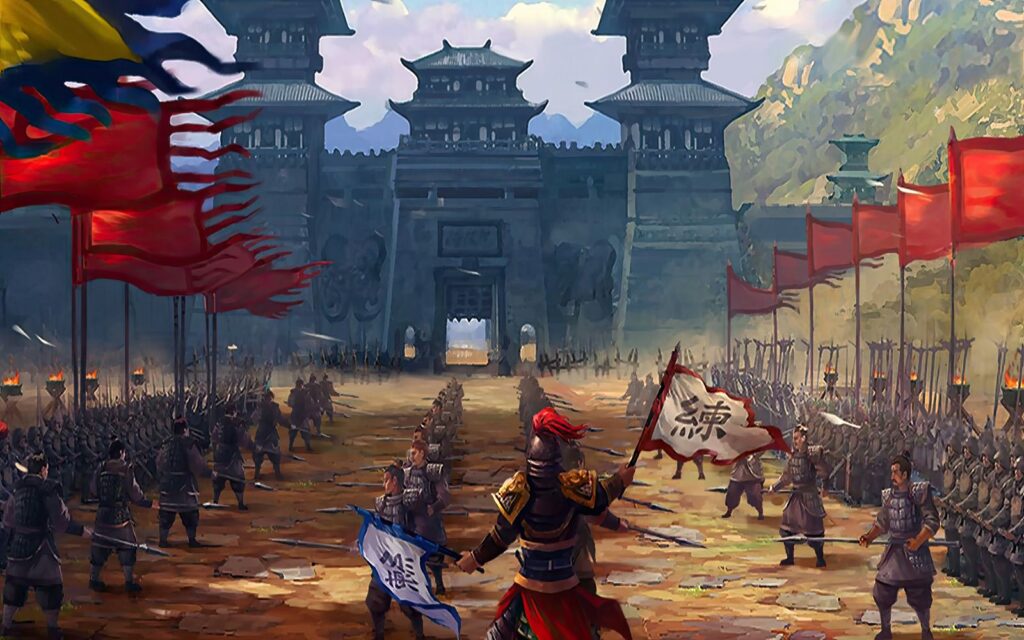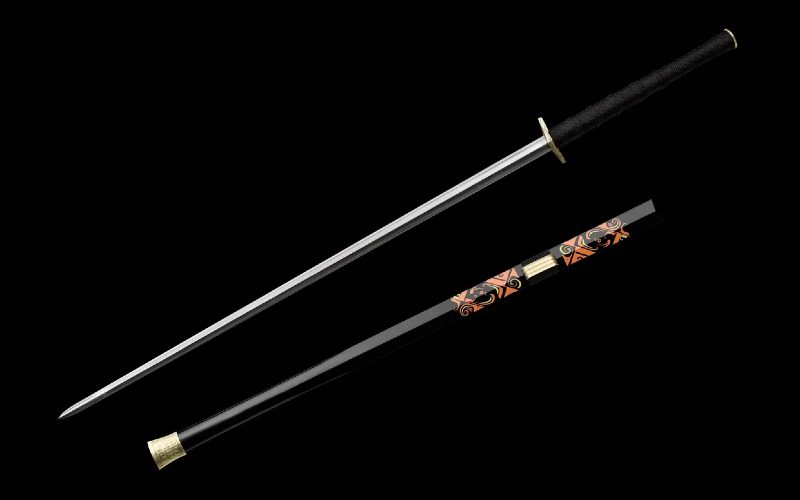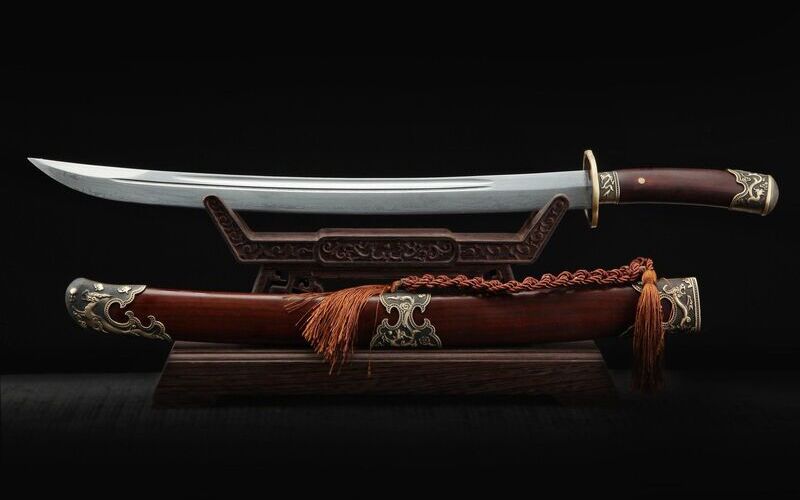Chinese Swords 101: From Bronze to Steel – A Journey Through Time

With a history of more than 5,000 years, Chinese swords are deeply intertwined with the country’s cultural heritage. Instead of mere weapons, these blades were often symbols of status and power, causing swordsmiths to be highly respected as their skills were very much valued. Today, these swords are highly sought after among collectors who are history aficionados and martial arts practitioners due to their beauty, symbolism, and connection to the past.
At SwordEncyclopedia, our team has compiled a list of articles on Chinese swords to help readers learn more about its history, the different types available, Chinese swordsmanship, and more.
Chapter 1: History of Chinese Swords

Spanning 13 dynasties and various notable developments, the history of Chinese swords began approximately around 3,000 BCE. Since China’s military tactics evolved with each dynasty, the swords also changed based on the different needs, materials, and forging methods. This continual innovation has culminated in unique blade designs that went on to inspire swords from other cultures.
- Xia Dynasty – The first Chinese dynasty founded by the legendary Yu the Great, the swords at this time were made of copper and bronze.
- Shang Dynasty – The earliest Chinese dynasty supported by archaeological evidence, this era saw the production of bronze swords.
- Zhou Dynasty – Lasting almost 8 centuries, it is no surprise that the longest ruling dynasty led to the creation of the first Chinese iron swords.
- Qin Dynasty – As China was unified, this era was known for the Qin Emperor’s terracotta warriors and swords that became larger and sharper.
- Han Dynasty – A period of stability and prosperity, this era was the peak of sword creation.
- Sui & Tang Dynasties – These dynasties were the golden eras for swordsmanship and most notable of all, was how the dao gradually replaced the jian.
- Song Dynasty – With China reunited under Emperor Taizu, significant advancements happened including the creation of single edged broad blades.
- Yuan Dynasty – Established by Mongols and ruled by Kublai Khan, smaller curved swords were used by those mounted on horses.
- Ming Dynasty – This dynasty saw a spike in the nation’s population and economy. Here, the dao became the main weapon for soldiers.
- Qing Dynasty – The last imperial dynasty in China, the use of rifles and decreased armored units led to simple and effective daos.
- Modern Times – With modernization, smaller blades were carried for self protection while flexible unsharpened swords are still used in Wushu today.
Read Chapter 1: History of Chinese Swords: 11 Eras of Chinese Blade Evolution
Chapter 2: Chinese Sword Types

As the world’s oldest continuous civilization, China’s long history means that there are many different types of Chinese swords available today. Besides being used as weapons, some of these swords served as status symbols or played a role in various ceremonies. Join us as we discover 33 Chinese swords and explore their designs, forms, and functions. Examples include:
- Zhi Bei Dao – One of the earliest daos dating back to the 15th century, this one handed single edged weapon was originally made out of bronze until the knowledge of metallurgy advanced.
- Longquan Jian – Believed to be the first iron sword in Chinese history, the Longquan sword was made by master Ou Yezi about 2,600 years ago, becoming the standard for swordmakers in China.
- Shuangshou Jian – Translated to “paired swords”, these dual wielded double edged straight blades were used in both battles and ceremonies.
- Tai Chi Jian – One of the most famous Chinese blades, the Tai Chi sword is mostly used in Chinese martial arts and rarely in actual combat.
- Zhanmadao – This large two handed single edged sword reaches up to 5 to 6 feet in length, designed specifically to defend against mounted units by taking down horses in a single strike.
- Hudiedao – One of the most popular Chinese swords in modern media, the butterfly sword is a pair of dual wielding short swords that vary in shapes and sizes.
- Hook Swords – Believed to become popular during the Qing dynasty, these dual wielded hook swords with double edged blades have an intricate design, ideal for close quarters combat.
- Dadao – The definition of the Chinese greatsword or broadsword, the single edged dadao is large and heavy, designed for chopping and slashing.
- Guandao – Made famous by the legendary Guan Yu, the guandao is a halberd that was once used in military training drills and exams.
Read Chapter 2: 33 Chinese Sword Types: Design, Form, and Function
Chapter 3: Jian – The Double Edge Sword

Jian is one of the commonest Chinese swords, having served as a weapon and symbol of rank. Today, the term “jian” refers to any double edge Chinese sword. Our article on this ancient blade explores its history, significance, characteristics, and use in martial arts.
- Types of Jian – Chinese jians have a straight double edge blade. Discover the different variants available such as duan jian, chang jian, shuang jian, and more.
- Characteristics of the Jian – Although modern jians are inspired by Qing dynasty designs, each has characteristics that depend on its wielder. Some factors include its construction, length, weight, and balance.
- Parts of the Jian – Understanding the different parts of the jian such as the jianti, jianren, jianji, jianba, jianpao, and jianqiao can help one to appreciate the blade more as each part has an important role, such as to decrease the weight, or making the sword sturdier.
- The Jian in Martial Arts – Currently, the jian is used in various Chinese martial arts such as Tai Chi, Wushu, Meihua Quan, Bagua Zhang, and more.
- History of the Jian – As the jian evolved from one dynasty to another, it began as a short copper weapon in prehistoric China to become the blade we know today.
Read Chapter 3: Chinese Jian Swords: From Ancient Battlegrounds to Modern Dojos
Chapter 4: Dao – The Single Edge Sword

Highly sought after by collectors, the dao or Chinese saber is often used in martial arts. Featuring a broad saber with a single edged blade, our article explores the different types available, designs, and evolution.
- Types of Daos – Due to its long history, there are many different variants of daos available including duandao, yaodao, miaodao, dadao, and many more. It can also be categorized based on the different blades such as zhibeidao, liuyedao, niuweidao, etc.
- Characteristics of the Dao – Although there are many different types of dao available, all of them share similar characteristics such as the blade construction, length, weight, and balance.
- History of the Chinese Dao – Having come after the jian, the dao required a shorter training time, resulting in its adoption for military troops. Eventually favored by cavalry troops, there soon was a standard regulation regarding its size, materials and mounting.
Read Chapter 4: Dao Swords: A Guide for Sword Collectors
Chapter 5: Chinese Swordsmanship

The fourth largest country in the world and second in terms of population, China is home to 56 official ethnic groups. As a multinational state, its many cultures also mean that there are many sword fighting styles that have existed throughout history.
- Types of Chinese Sword Fighting – Chinese swordsmanship mainly uses the double edged jian or curved dao. Using varying types of blades such as the miao dao and dadao, martial artists can practice different styles including taijiquan and wing chun.
- Chinese Sword Fighting Facts – Sword fighting skills differ depending on the type of blade used. While some swords were designed for war, there are also others that were developed for special moves.
- History of Chinese Sword Fighting – With the many styles and weapons throughout history, swordsmanship became highly respected during the Han dynasty before becoming a practical skill. Soon, it became more refined and was incorporated into the military’s training system.
Read Chapter 5: Chinese Sword Fighting Styles and Their History
